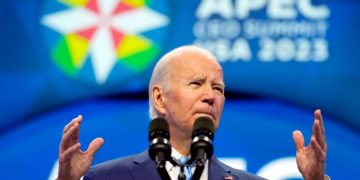The Complicated Landscape of the BOJ’s Policy
Navigating Monetary Policy Complexities
The Bank of Japan (BOJ) is facing an increasingly intricate monetary policy landscape. In March, the BOJ announced an end to its negative interest rate policy, a hallmark for eight years, raising rates by 10 basis points. The short-term interest rate target was lifted from zero to 0.1%, and the long-term interest rate control policy around zero was abandoned. This decision indicated the global curtain call for the era of negative interest rates.
Market Speculation on Interest Rate Hikes
Weighing the Prospects of Tightening
Since then, speculation about the BOJ’s interest rate hikes has intensified, particularly with the yen under consistent devaluation pressures. The mix of rising inflation levels, the weakening yen, and Japan’s underwhelming economic performance are influencing the BOJ’s monetary approach. Eyes are on the Bank to see if the July policy meeting might bring an announcement of increased rates.
Inflation on an Upward Trajectory
The Heat of Inflation
Recently published figures showed that Japan’s Consumer Price Index (CPI) for June remained elevated two months in a row. Specifically, the general CPI year-on-year growth rate in June stayed at 2.8%, the highest since February. The core CPI, excluding fresh food, rose by 2.6%, climbing over the previous month’s 2.5%, while the core CPI, excluding both fresh food and fuel costs, marginally increased from the previous 2.1% to 2.2%.
Though the BOJ focuses on core CPI excluding fresh food and fuel prices, which remains relatively low, there’s analysis suggesting the considerable wage hikes post-spring wage negotiations may lead to a more pronounced wage-price spiral, potentially heightening the likelihood of a BOJ rate hike in July.
Policy Deliberations Amid Inflation Concerns
Assessing Monetary Adjustments
Minutes from the BOJ’s monetary policy meetings in April and June reveal deliberations on adjusting the policy path amidst rapid inflation. April’s meeting minutes projected a gradual rise in potential inflation, with medium to long-term inflation expectations rising due to a healthy wage-price cycle, stabilizing around 2%. Officials stated that moderate rate hikes should be considered to avoid abrupt and swift hikes once the price targets are consistently met.
June’s meeting minutes hinted at more signals towards potential hikes, noting the necessity of staying attuned to data as preparation for the next meeting, with one official suggesting the BOJ should raise policy rates sooner rather than later, if deemed appropriate.

Persistent Depreciation Pressure on the Yen
The Yen’s Struggle Against Depreciation
Despite June’s minutes hinting at a July rate increase, there’s skepticism among analysts that the mention of a possible hike might be mere posturing. Hawkish rhetoric from the BOJ could mainly be a verbal strategy to bolster the yen.
Since the beginning of the year, the yen has remained weak, with Japan’s Ministry of Finance intervening with 9.8 trillion yen in currency markets to counteract the currency’s depreciation, ultimately with limited success.
Economic Downturn Sparks Concerns
Navigating Through Economic Headwinds
Inflationary pressures and yen depreciation might push the BOJ towards tightening; however, it’s noteworthy that current economic performance in Japan is less than stellar, with the International Monetary Fund (IMF) and the Japanese government reducing growth forecasts. If the economy continues to weaken, the BOJ’s move to raise rates could further affect growth negatively.
The Japanese government revised their growth expectations for the fiscal year 2024 (April 2024 – March 2025) due to weakening yen, rising import costs, and reduced consumer purchasing power. The expected growth is now at 0.9%, down from 1.3% predicted in January.
Furthermore, the IMF lowered its 2024 economic growth forecast for Japan by 0.2 percentage points to 0.7%, citing temporary supply disturbances from Q1 and weaker private investment.
If Japan’s growth outlook faces increased downward pressure, the BOJ’s interest rate trajectory may confront even more formidable challenges.

































